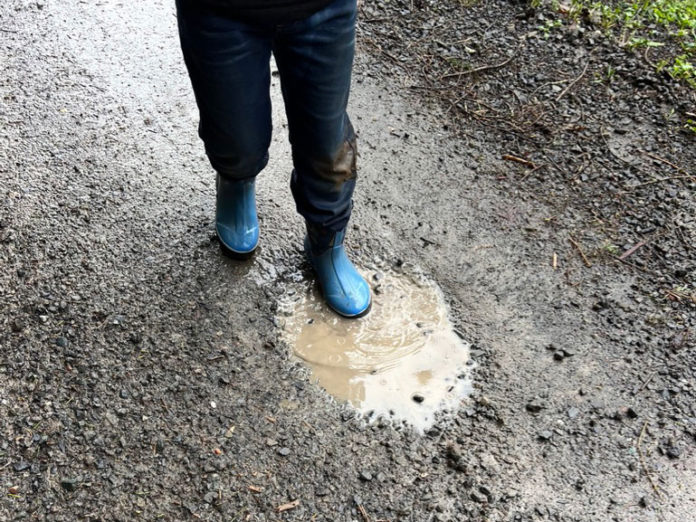What’s more fun than children playing in puddles? The rain created many joyful moments this past week—and not just for 5-year-old boys in rubber Wellies. Fire-risk gauges dialed down to their lowest level: Low. Creeks started flowing. Hills and meadows began greening, a harbinger of California’s winter.
By Pierre Ratte
Fun facts: Rubber originally comes from the Hevea brasiliensis tree. Used by the Olmecs since 1500 B.C., a slash in the bark yields a white substance known as latex. Dandelions produce the same substance, as do 2,700 other plants.
Christopher Columbus was perhaps the first Westerner to see latex in rubber balls. In 1528, Cortez not only brought rubber balls back to Spain, he brought a team of Aztec ball players.
In 1770, Joseph Priestly discovered latex could rub out pencil marks on paper—hence the term “rubber.”
In 1839, American chemist Charles Goodyear spilled sulfur and rubber on a hot stove, thereby inventing vulcanized rubber—a harder but still elasticized compound. In 1853, Hiram Hutchinson purchased Goodyear’s vulcanization patent and began producing rubber boots in France. Hutchinson’s company still produces boots, sold as Aigle. Hutchinson, the original company, is the third-largest producer of non-synthetic rubber products Internationally.
So where does the term “Wellies,” for rubber boots, come from? Arthur Wellesley, the First Duke of Wellington, who commanded the army that defeated Napoleon at Waterloo, after the war designed a new style boot to accommodate a change in trouser style from knee-breeches to long pants. The new boots were easy on, easy off and had a waterproof lining. They became widely popular for their practicality. Soon manufactured from rubber, they became known as “Wellies.”
Speaking of the joy of jumping in puddles, Gene Kelly’s “Singing in the Rain,” released in 1952, celebrated “that glorious feeling” in dance and song. The movie was directed and choreographed by Kelly, and the song was composed by Arthur Freed with lyrics by Nacio Herb Brown.









